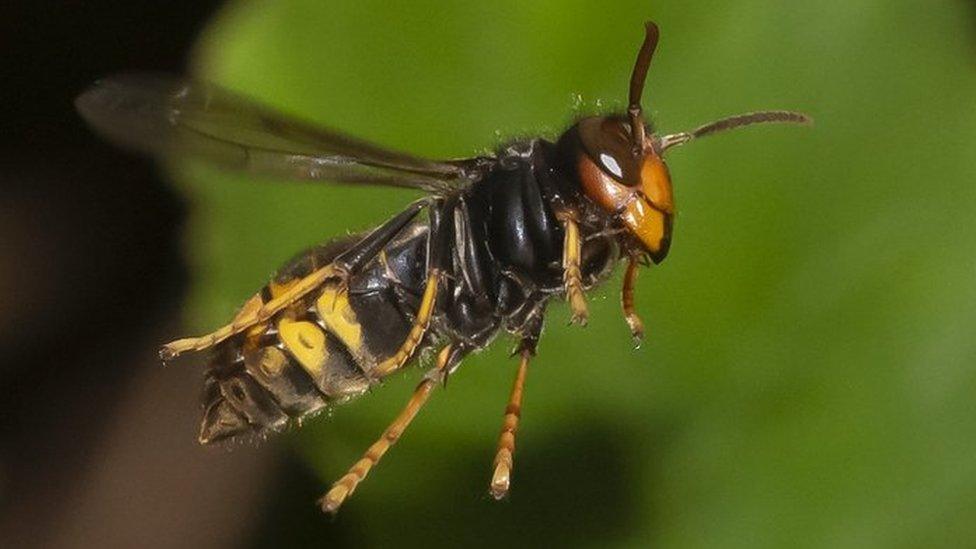Jersey method to track hornets 'used across Europe'
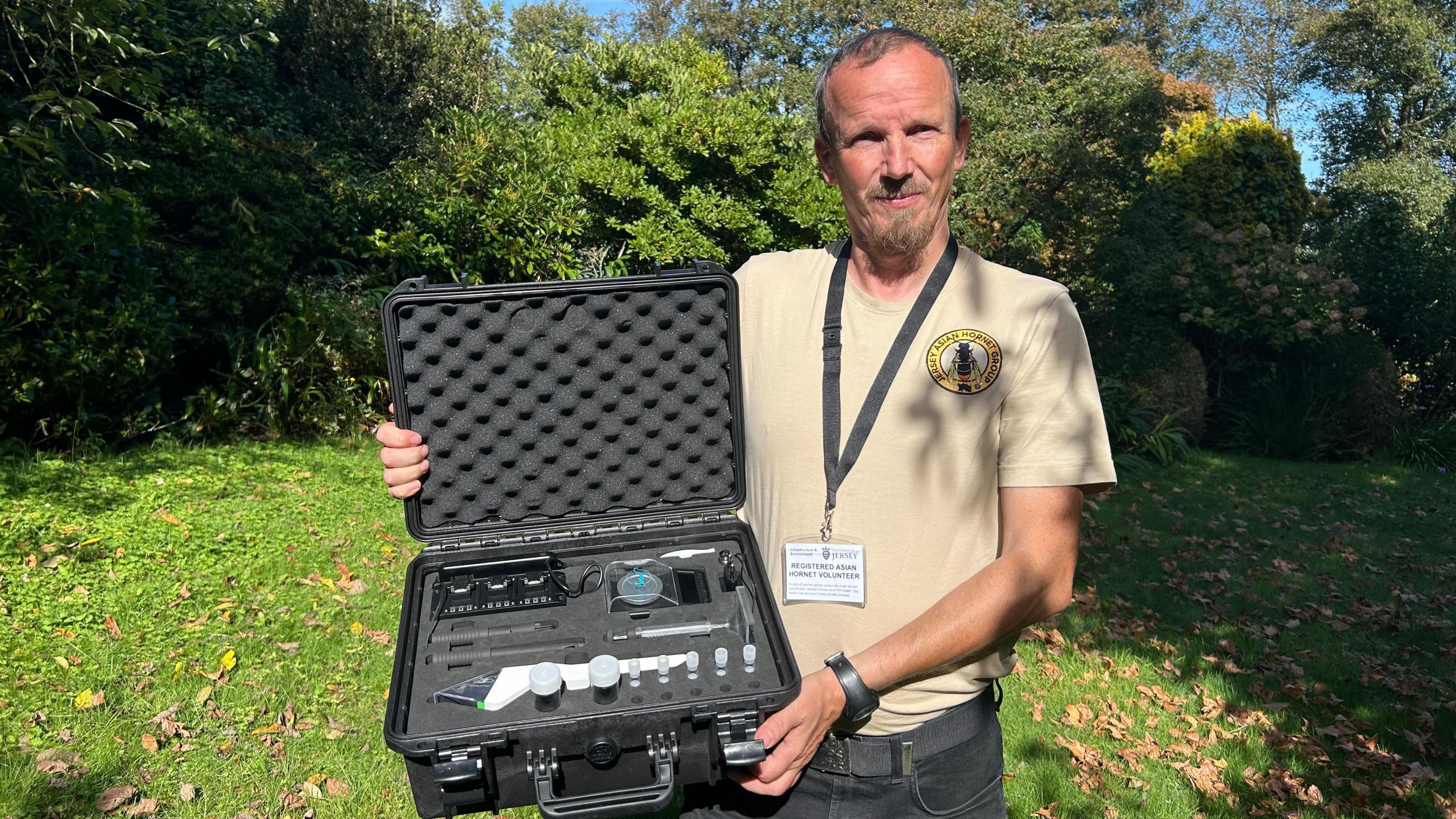
Dominique Soete holds the kit used to tag and track Asian hornets
- Published
A method to track Asian hornets which was developed in Jersey is being used across Europe, an expert has said.
Dominique Soete, from Belgium, who has been dubbed the "hornet whisperer" because of his ability to track them, regularly visits the island to help the Jersey Asian Hornet Group.
He said he is one of those who has adopted the "mark-release-recapture" method which was developed by Bob Hogge, a local beekeeper in Jersey.
He said the system, dubbed "the Jersey method", was now used in the UK, across Europe and even in America, although it now involved the use of radio tags, rather than marking the insects.
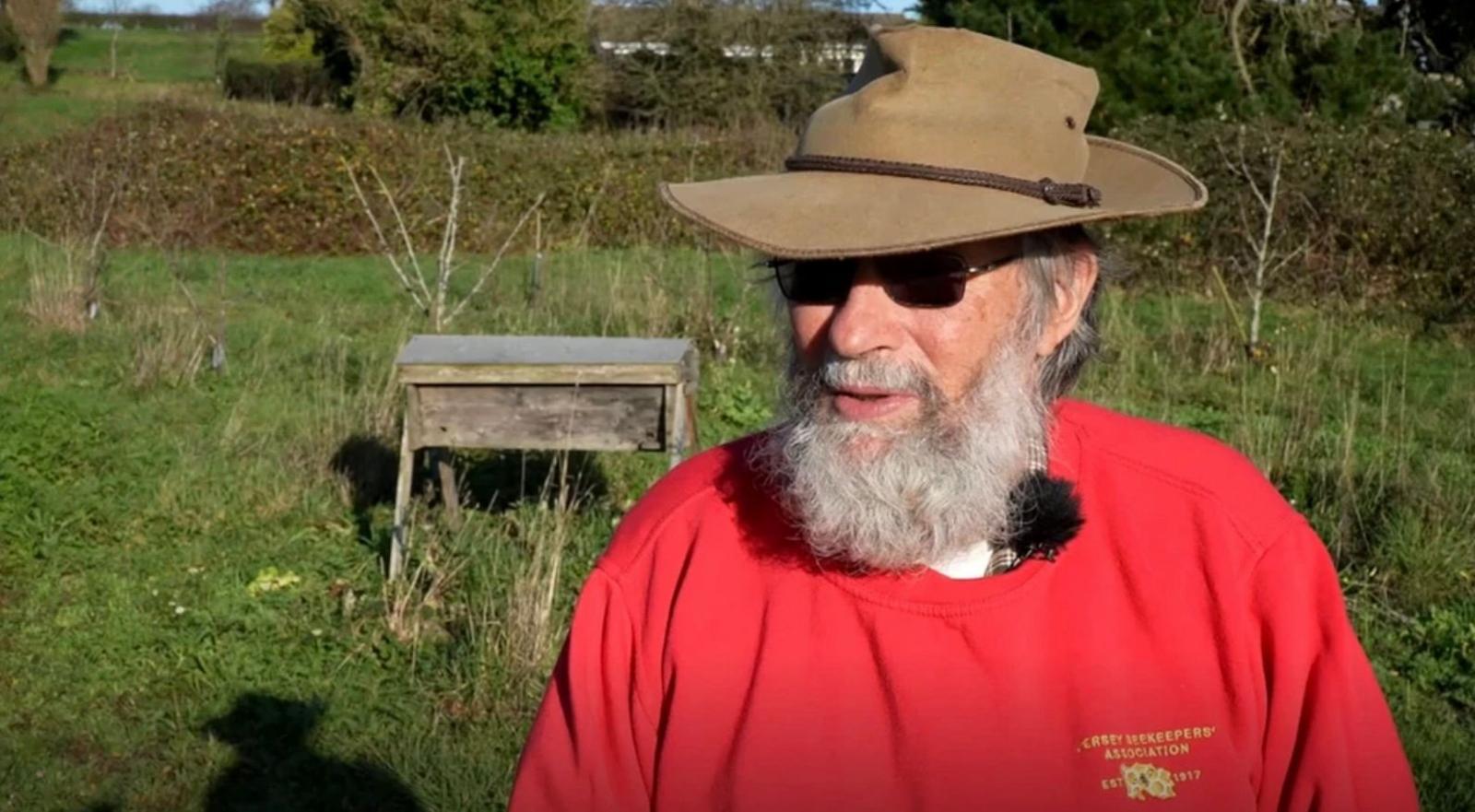
Bob Hogge was the president of Jersey Beekeepers' Association in 2016
Mr Hogge said he developed the method over seven weeks in 2016 after the first Asian hornets were identified in Jersey.
He said: "It's a simple method really, you catch the hornet, mark it and let it go and it will come back.
"It is a bit more complicated than that but really that's what it's all about."
Mr Hogge added that others had "improved it" over the years but the method largely remains similar to his original idea.
The tracking method involves marking hornets which have been attracted to a wick-bait station and timing how long the insect takes to fly to its nest and back to the bait.
Mr Soete said a hornet's flight time of one minute would represent a distance of 100m from the station to the nest.
He said wick-bait stations were jars which hold a sugary substance the Asian hornets are attracted to and will regularly return to eat at.
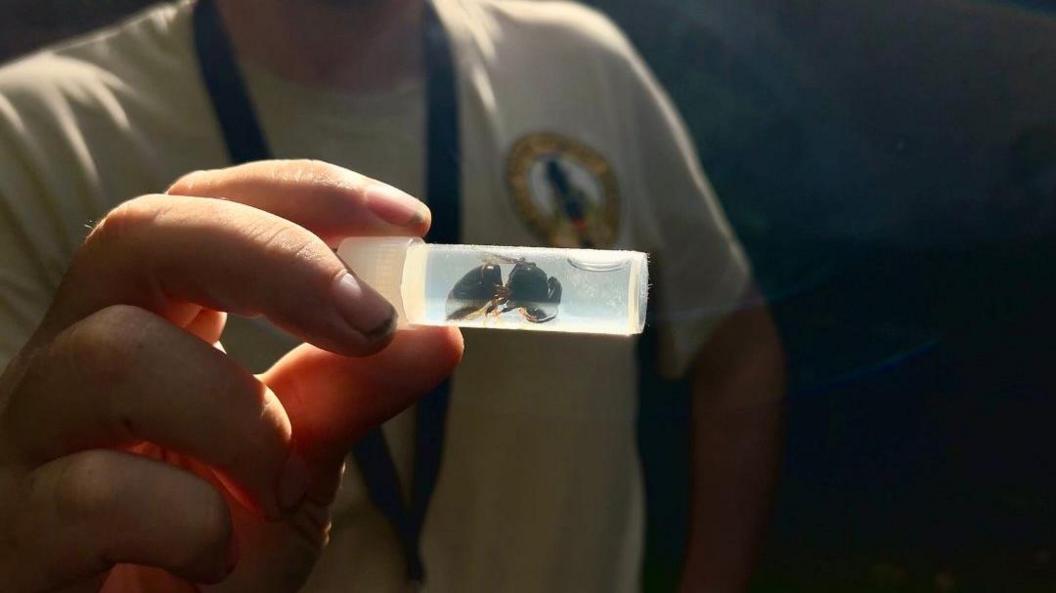
An Asian hornet caught by Mr Soete
Mr Soete said the latest technology involved attaching radio tags to the hornets, instead of simply marking them. The tags send a signal to receivers so they can be followed back to their nest.
"There's now more recent technology where the tags are lighter, the receivers are better," he said.
"It works with sound signal but as well with a colour signal so then you know in which direction the hornet is flying and approximately how close you are."
How do we track Asian Hornets?
Addressing his nickname, Mr Soete said: "I'm thinking like a hornet - why is she flying high? Why is she taking the turn around the tree?"
Mr Soete said he found a hornet nest within 40 minutes of arriving in Jersey for the first time.
He added that he once discovered a nest from spotting a hornet which was flying more than 550m away from its hive.
Follow BBC Jersey on X, external and Facebook, external. Send your story ideas to channel.islands@bbc.co.uk, external.
Related topics
- Published7 May
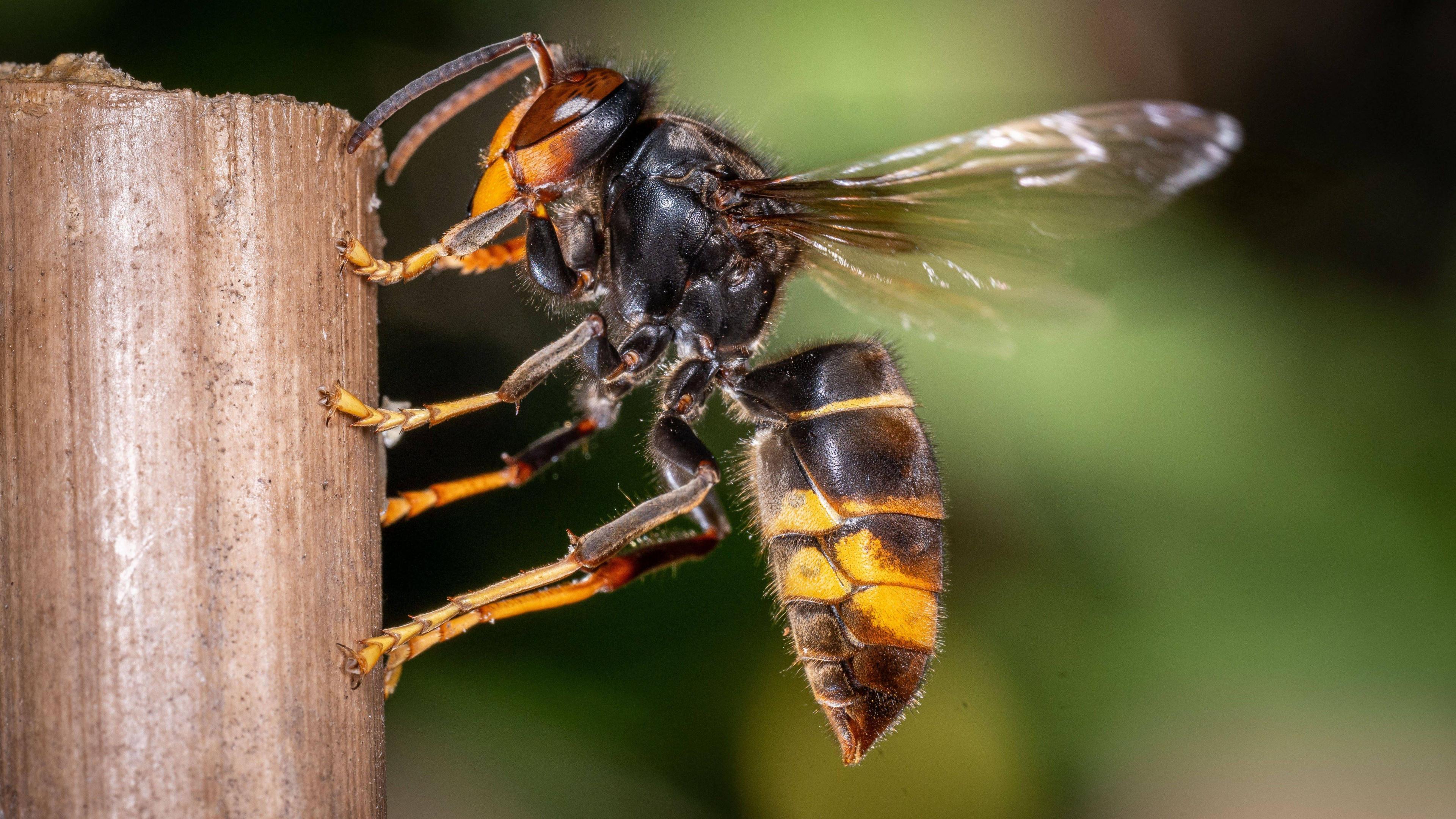
- Published27 April
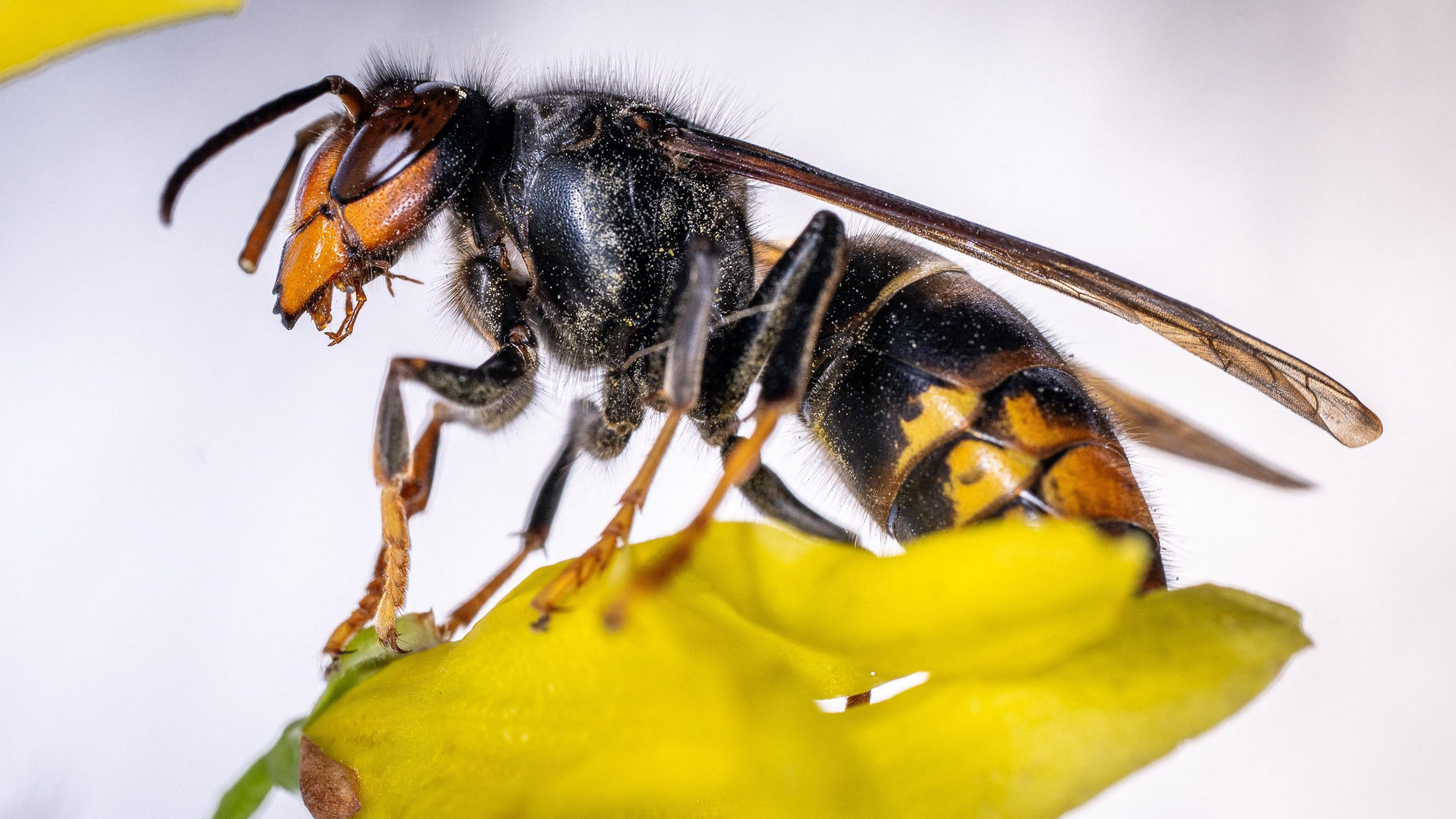
- Published2 January 2024
